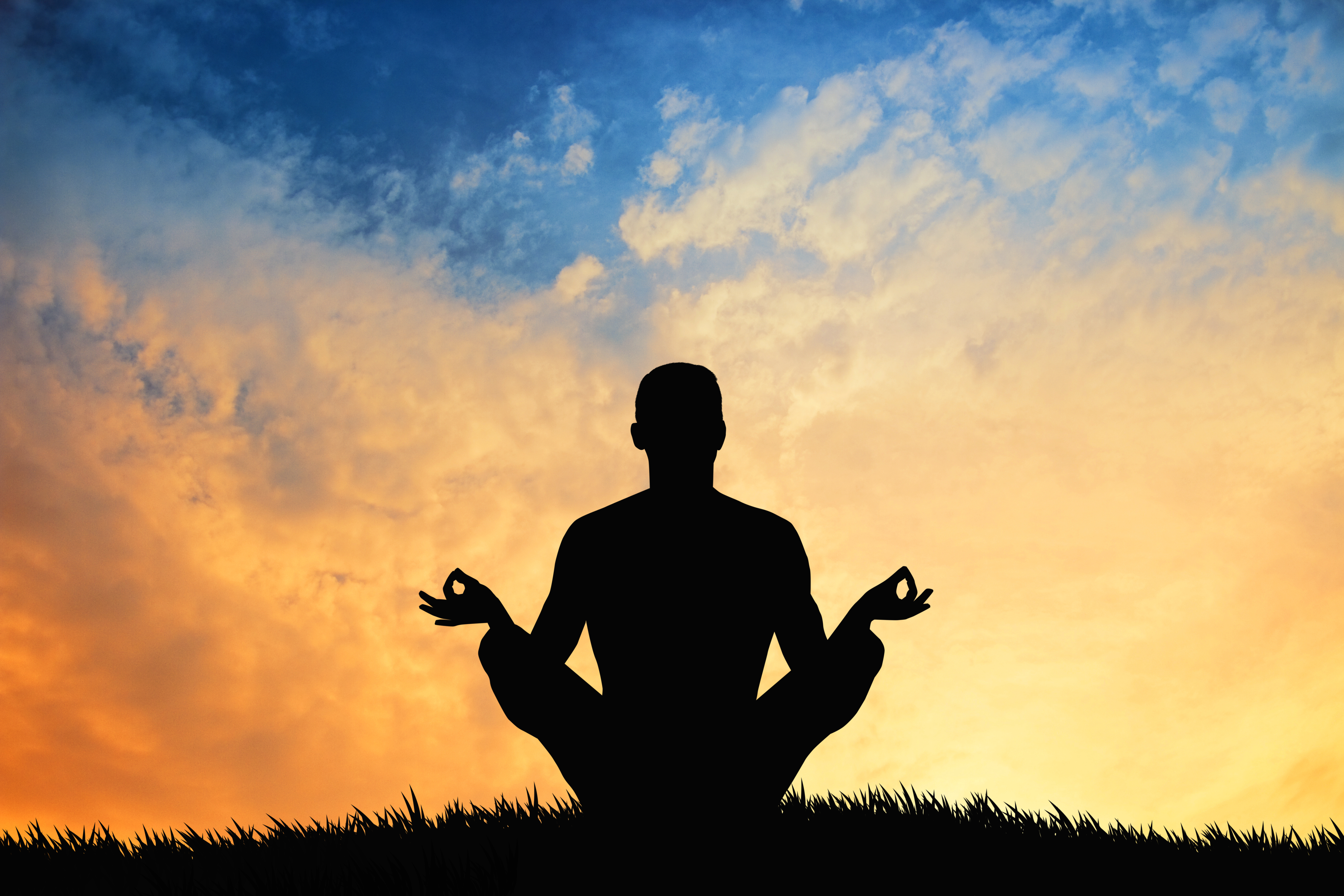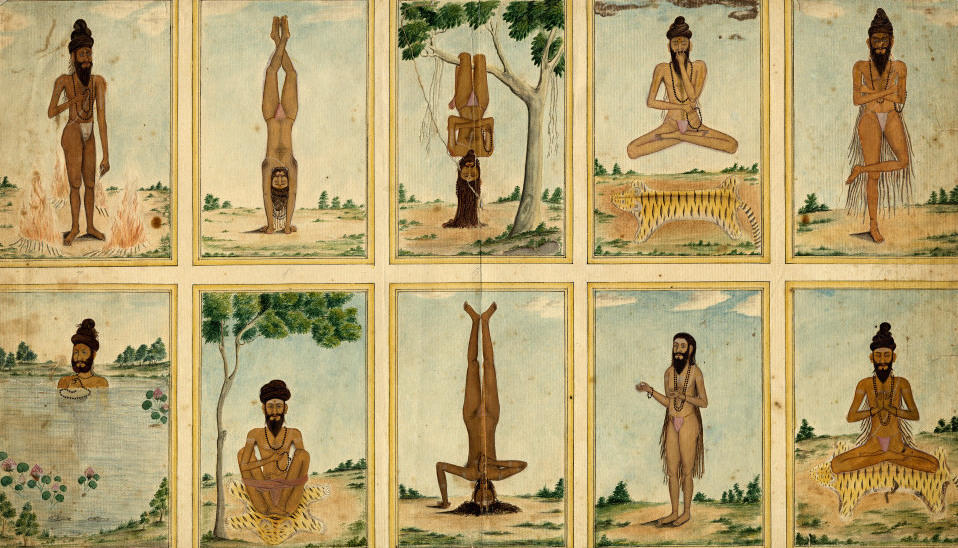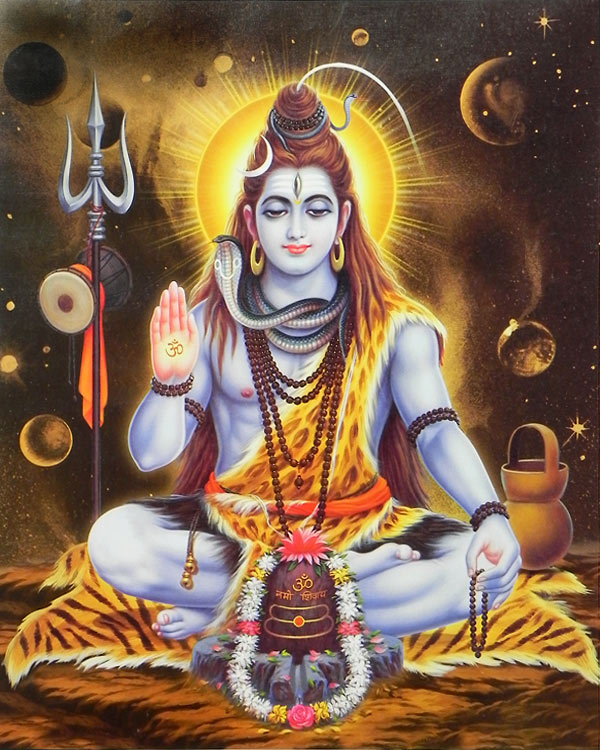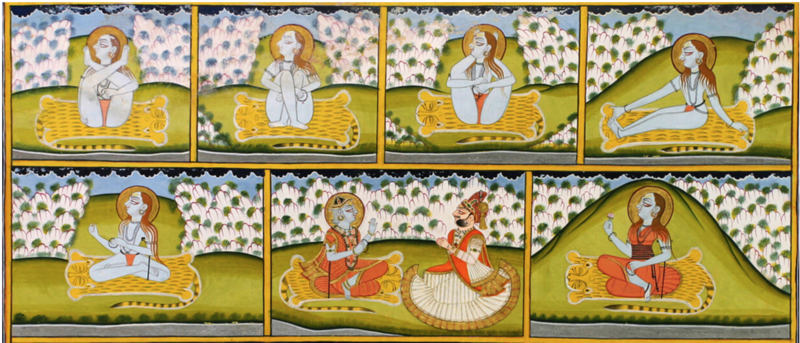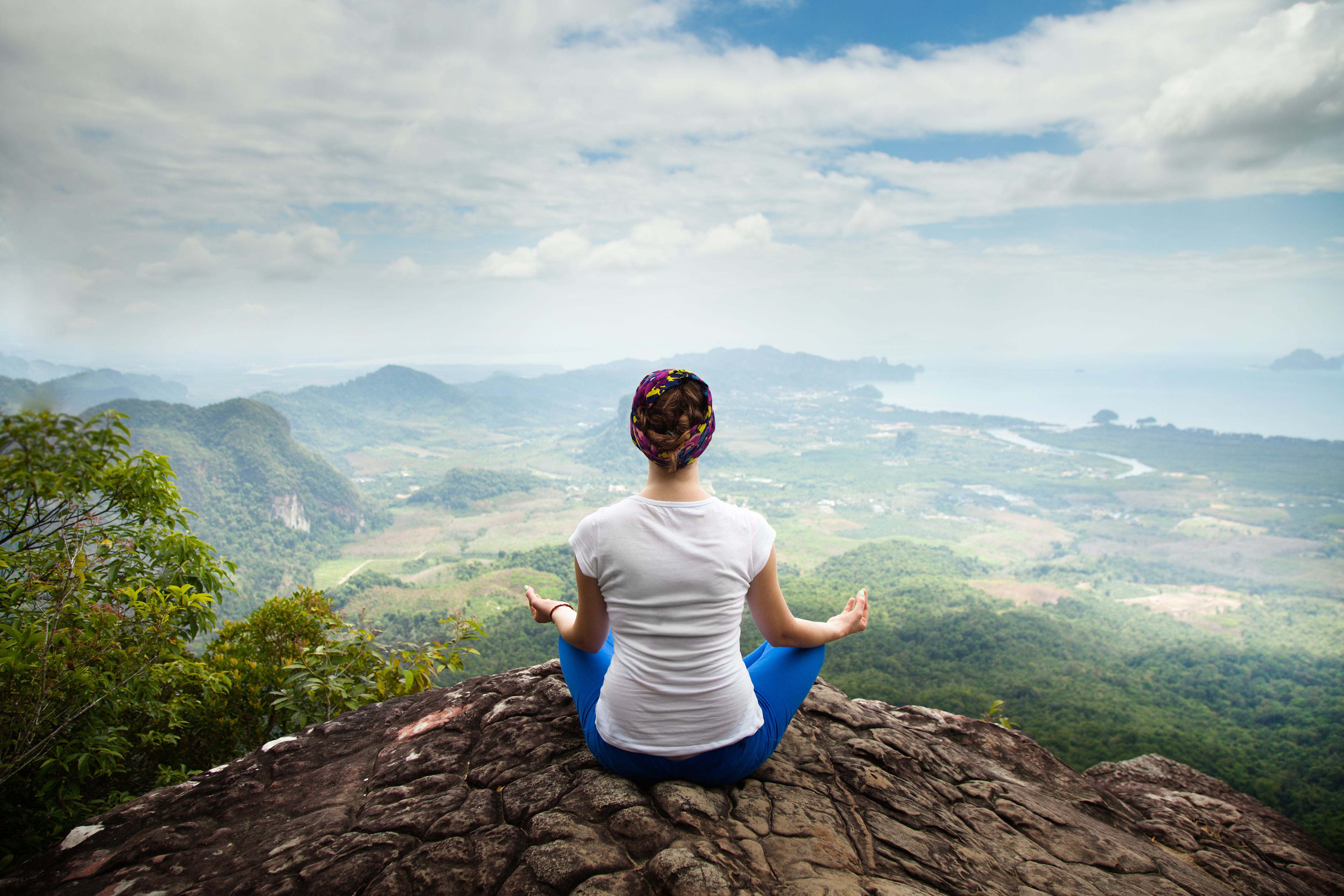Sankhya Darshana: The Theoretical Foundations of Yoga Philosophy
In the west, we often use the term “yoga philosophy” to describe the essence and meaning of texts such as The Yoga Sutras of Patanjali, the Upanishads, and Bhagavad Gita. In India, there is another word that is more commonly used for philosophical texts, doctrines or theories- the Sanskrit word “Darshan.” At the same time, however, the English word “philosophy,” which comes from the Greek “Philo”- (wisdom) and “Sophia”- (love), is not necessarily the best translation for this word. “Darshan” in Sanskrit, is more accurately described along the lines of “vision” or “to see”- something seen or revealed to the great Rishis of ancient times through deep states of meditation. In Darshan, the Rishis, through the great Vedic scriptures, reveal to us what has been revealed to them, so that we may have the same vision ourselves. But what visions await us? What is it that we are meant to see? The true self. The ultimate goal behind all Darshan is to know, “who am I?” There are two directions one can go in search of the answer to this question- outward, or inward. The former journey finds its expression in physics, biology, the scientific method. The latter method, the inward path, is expressed through Darshan, ultimately leading to the science of Yoga.
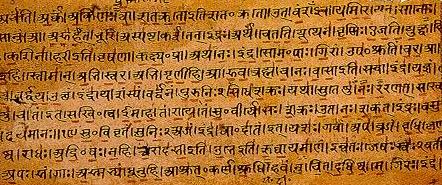
The basis of all Indian spiritual thought are the Vedas. The importance of the Vedas, the oldest known extant religious scriptures and the earliest known examples of human literature, cannot be overstated when discussing the origins of yoga philosophy. The textual representation of the Vedas are divided into 4 compilations:
-
Rig Veda, concerned with the universal consciousness,
-
Yajur Veda, concerned with rituals and karma (actions),
-
Sama Veda – concerned with chanting, vibration, and sound,
-
Atharva Veda – concerned with formulas, magic spells and occult knowledge such as Yantra, Mantra, and Tantra.
With the Vedic texts as a foundation, there have evolved 9 main Darshans over the last several millennia in India. These 8 darshans are divided into 2 categories: Āstika and Nāstika. Āstika Darshan accept the supreme authority and premise of the Vedas -in western terminologies, orthodox philosophies- while Nāstika (heterodox philosophies) do not accept the Vedas as the source of all knowledge.
The 6 Āstika darshans are:
– Sankhya Darshan, the enumeration school- founded by the sage Kapila, Sankhya Darshan introduces the concept of Purusha and Prakriti and describes the elements of creation – more on this later.
– Yoga Darshan, founded by Patañjali (which assumes the metaphysics of Sankhya), is the first Darshan to give structure and practical steps to the practice of yoga. Its foundational text is the Yoga Sutras of Patanjali.
– Nyaya Darshan, the school of logic, asserts that there are only 4 sources from which knowledge can be attained: 1. Perception, 2. Comparison, 3. Inference/experience, 4. Words of enlightened beings such as Patanjali, Kapila, etc.
– Vaisheshika Darshan, the atomist school – perhaps the most “scientific” of the Darshans, Vaisheshika asserts that there are only 2 sources of knowledge – perception and inference. Vaisheshika also introduces elements of atomic theory.
– Mimamsa Darshan, the tradition of Vedic exegesis. This Darshan is karma and ritual based.
– Vedanta Darshan, the Upaniṣadic tradition- “The conclusion of the Vedas.” Vedanta Darshan can be either dualistic or non-dualistic (Advaita Vedanta of Shankaracharya is considered non-dualistic Vedanta), and is mainly concerned with the interplay between Brahman (ultimate reality/soul) and Jivatman (Individual reality/soul).
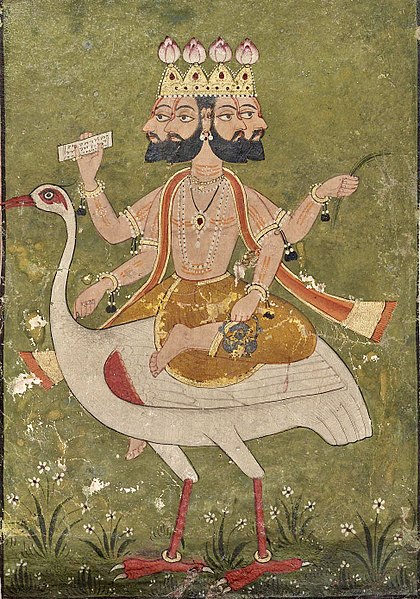
And the 3 main Nāstika darshans are:
– Charvaka, the materialist or skeptic school – “eat, drink, and be merry”
– Jainism, the liberation school
– Buddhism, the school of the 4 Noble Truths and Eightfold Noble Path.
Diving into the depths of these schools of thought would, and indeed has, filled volumes. But since the title and hence the focus of this entry is the Sankhya Darshan, let us now turn to it for further discussion.
The word “Sankhya” is composed of two separate Sanskrit roots: The noun sankhyā, meaning number; based on the root khyā (to “name” or “make known”) with the prefix sam- meaning “together.” The system of Sankhya Darshan was first composed in written form by the philosopher Ishvarakrishna, in the 3rd century CE, although many references to Sankhya can be found in earlier texts, such as the Mahabharata, suggesting that Sankhya itself is actually much older than its first written composition, The Sankhya Karika of Ishvarakrishna would suggest.
In brief, this text attempts to enumerate the 25 elements of creation which compose the dual nature of reality. In doing so, Sankhya is the first system to describe two very important terms that can be found in many following systems of Indian thought – these are Purusha and Prakriti. Purusha is pure consciousness, the latent, formless, qualityless, unmanifest spirit that encompasses and pervades everything that exists, while Prakriti describes the manifested elements of creation- matter, in other words. With this concept of Purusha and Prakriti, Sankhya makes its case for the both the evolution and the dual nature of reality.
Prakriti, on its own, cannot evolve. It is stagnant. The force of evolution can only occur when Prakriti is infused with Purusha. This fusion is the source of all growth, movement, and evolution. It is only when Purusha fuses with Prakriti that nature can manifest itself. When this fusion of consciousness/spirit and matter occurs, manifestation of matter and the process of evolution can begin. When the pure consciousness of Purusha manifests itself as Prakriti, it needs some method of perceiving itself. This necessitates the formulation of the Buddhi- individual intelligence or awareness. Out of Buddhi, Ahamkara is formed – the individual, self-identifying ego consciousness that allows us to identify ourselves as existing in the universe as individual beings, as well as maneuver through prakriti.
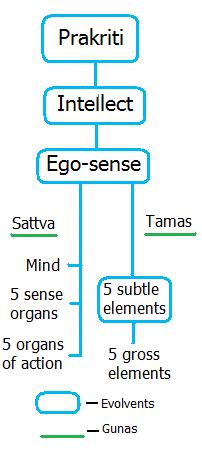
The ahamkara further divides into the jñanedriyas (the organs of perception- sight, taste, touch, smell, hearing); the karmendriyas (the organs of action- arms, legs, mouth, genitals and anus); and the Pancha Bhuta- the five gross elements, consisting of space (akasha), air (vayu), fire (agni), water (apa), and earth (pruvthi). The ability to identify and experience these elements requires manas – the analyzing mind commissioned with the task of coordinating the sense impressions.
The entire manifest universe is the result of the ever-changing permutations and combinations of these various principles, through with the Purusha can function as the driver of evolution.
In The Sankhya Karika of Ishvara Krishna with commentary by Radhanath Phukan, published by Ishwar Ashram Trust, Phukan writes in the introduction:
“The method of analysis is the same in the Sankhya as in the modern science. In science also, gross matter is taken up first for analysis which is carried ultimately to such a subtle stage that one may doubt whether the universe is at all real. The Relativity and the Quantum Theories lend support to the conclusion of the Sankhya philosophies and to one who is conversant to these theories, a proper understanding of the Sankhya philosophy would be quite easy.”
Thus, one can say that Sankhya is both macrocosmic and microcosmic in its scope. In breaking down the elements of creation to its most subtle building blocks, it aims to demonstrate that there is no end to the subtlety, and that no matter how closely one looks at physical reality, it is pure spirit or consciousness that can be found as both the basis and the animator of it all. So eventually, when peering into these quantum depths, we arrive at the obvious question: where does yoga come into the picture? What does this system of ancient quantum mechanics have to do with downward facing dog?
It is a common statement in India that Sankhya Darshan and Yoga Darshan are “sister systems” in that Sankhya is the theoretical aspect of Yoga and Yoga is the practical aspect of Sankhya. While Sankhya pinpoints, describes, and breaks down its vision of cosmology and creation, Yoga comes along and tells us exactly what steps we must follow in order to disentangle our ahamkara, or ego, with the prakriti that composes our physical bodies, so that we may identify with purusha, which is our true self. This is where Patanjali comes in with his famous Sutras. Without first understanding Sankhya, it is difficult to truly understand Patanjali’s step by step guide on how to stop fooling ourselves to believe that we are part of what our senses can identify in order to finally see what we truly are – Purusha, soul, pure consciousness.
Now that we have discussed Sankhya, the “theory” of yoga philosophy, in our next entry we will discuss The Yoga Sutras of Patañjali, often referred to as “the bible of yoga”- the practical, step by step system by which we can retrain our minds to identify with that Purusha which gave birth to our individual consciousness.
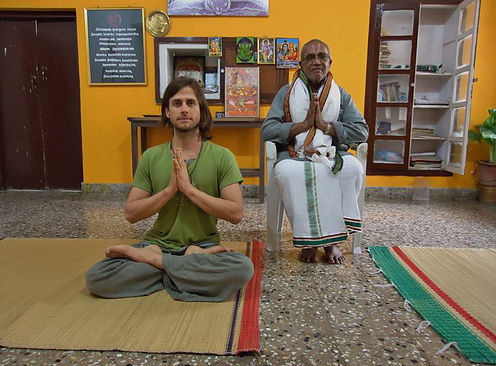
Joey Paz (RYT-500), who will be teaching our Yoga retreat March 3-11, 2019, is a longtime practitioner and devotee of the 8 limbs of Ashtanga Vinyasa Yoga in the lineage of Sri BNS Iyengar. Click here to read his complete bio.
